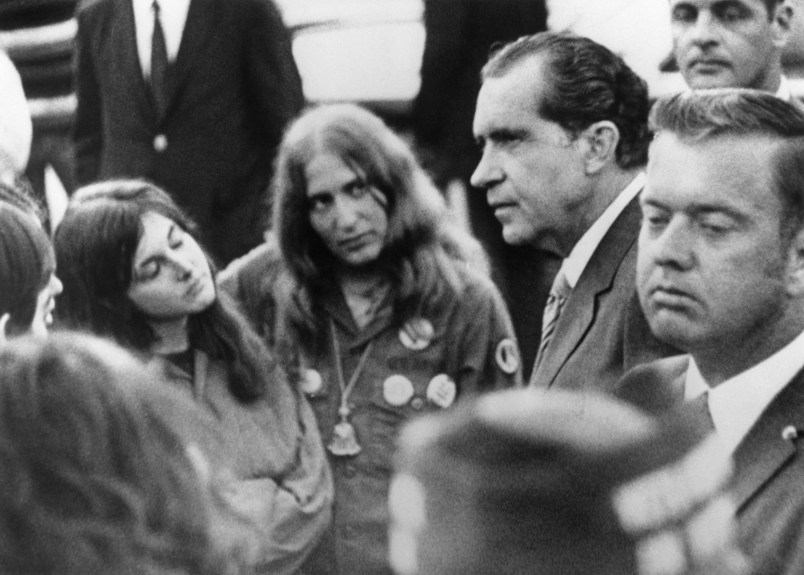I’m always reluctant to criticize presidents for Secret Service protective measures. America has a successful and longstanding history of killing its presidents. More particularly, any president is hard-pressed to overrule his Secret Service detail. That’s not only because they’re protective professionals and he or she is not. But it’s a huge responsibility and second-guessing their actions only makes it harder. We can’t know just what thinking led the Secret Service to whisk the President into the White House’s underground bunker complex or turn off the lights at the White House. But the pregnant symbolism — whatever the underlying reality — matched what we’ve seen very immediately from the President himself. Much as he seemed to grow tired of the COVID epidemic he similarly seemed to lose interest in the wave of protests over the death of George Floyd or simply get bored. He spent the weekend first shifting gears to cleaning up the mess over his looting/shooting comments and then going to Florida to watch a space launch, which he said would be an emblem of his Presidency. Then he shifted back to more provocations and threats, including his nonsensical but inflammatory claim that he will declare “Antifa” a domestic terrorist organization.
As I wrote yesterday, I don’t know and I don’t think anyone knows how this rush of overlapping crises plays out politically in November or under any other time frame. But if our analogue is Richard Nixon in 1967, ’68 and ’69, there are some notable differences.
For all his malevolence and the damage he left in his wake, Richard Nixon was a smart and strategic thinker and political operator. He was overwhelmed, reactive and finally lost control of the Watergate crisis. In this earlier period he operated from a considered and ultimately highly effective plan. What we think of as the post-’60s conservative backlash had two specific electoral dimensions. One was decisively shifting the white South into the Republican column in presidential elections – the full shake out for congressional, state and local elections would take two more decades. The second was shifting a critical slice of traditionally Democratic constituencies in the urban north — largely “ethnic” and working class — into the Republican column.
One basic difference is that Nixon was a former vice president arguing that the incumbent president and party had let the country spin out of control into manifest disorder. That is inherently more difficult as an incumbent president. Not impossible certainly but considerably more difficult.
The bigger difference is that President Trump clearly has no plan. There’s no ten-dimensional chess here. He’s reacting each day to the new events of the moment, much as he has through the COVID epidemic. Flexing, threatening, running away, demanding credit. He is also showing all his signatures — erratic behavior, short attention span, the reflex to inflame and divide. Also on vivid display is what’s likely best seen as his physical cowardice. I don’t expect him to wade out into the crowds to create some transformative moment. But where is he? Twitter is disembodied. You might as well be tweeting from the Moon. With such a large bullhorn it’s all one way communication. Lights out at the White House, hiding in a bunker, has the feeling of turning out the lights on Halloween and hiding out in your bedroom with a flashlight because you want the trick or treaters to go away or not egg your house. Lashing out, roaring for dominance, hiding in the basement.
The simple and sorry truth is that you don’t need to have a plan. In general we vastly overstate the impact of strategies adopted by political leaders and to a great degree even actions. History is like a force growing out of trends, myriad individual actions, multiple unknowns that remain hidden to us in the present and it rolls forth with … well, with the force of history. But Trump doesn’t look like a strong or commanding or even reassuring presence. He acts terrified and more than anything out of control.






